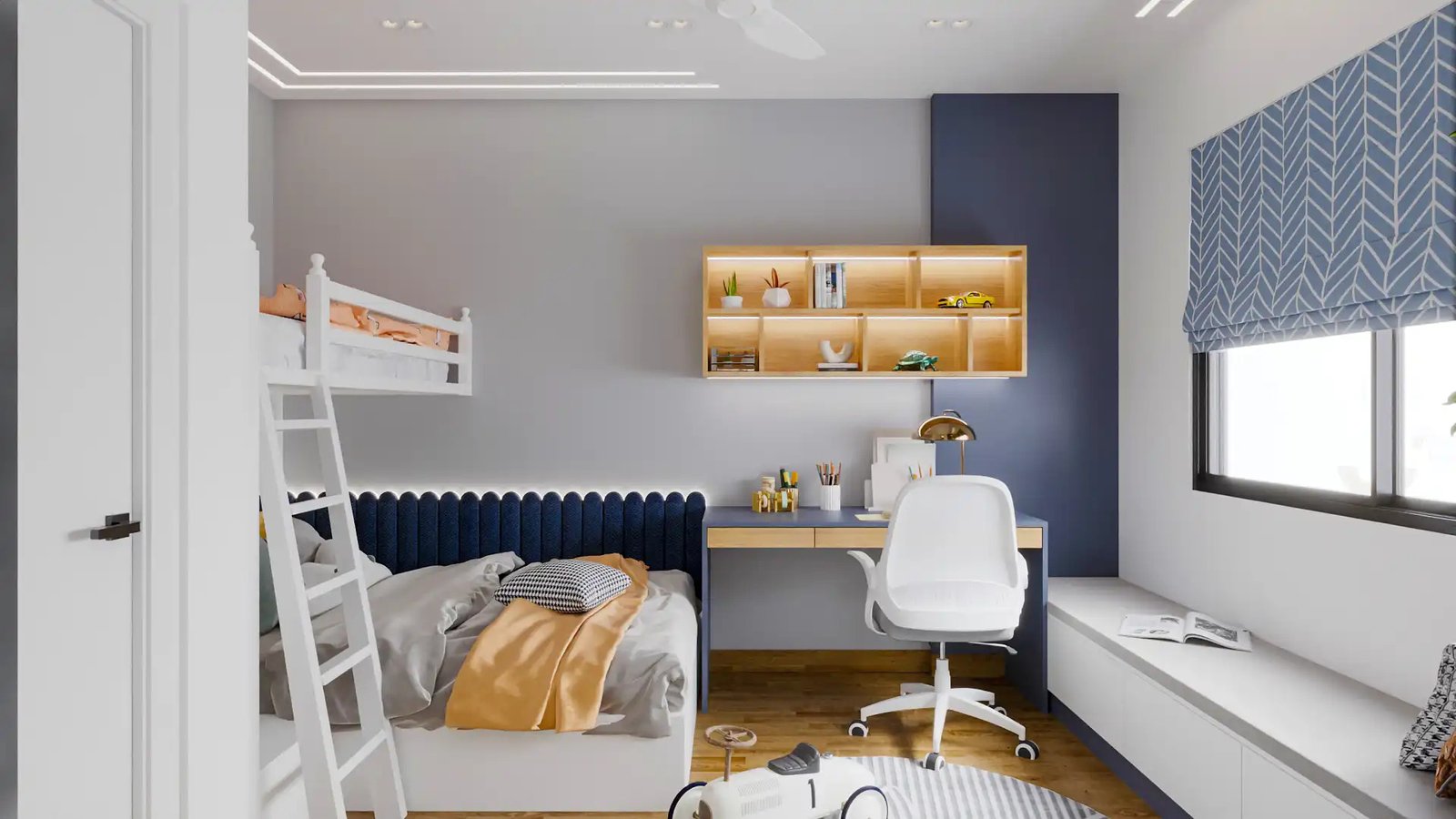Introduction
In the world of modern study room design, the importance of a well-lit space cannot be overstated. Lighting is crucial for fostering focus, reducing eye strain, and enhancing productivity. This element often gets overlooked when designing a study room, but it holds the power to transform the entire atmosphere of the space. Whether you are a student, professional, or simply someone who values a dedicated workspace, understanding the essentials of proper lighting is key. This article will explore the different aspects of study room lighting and provide expert tips for achieving a blend of functionality and elegance.
1. Importance of Good Lighting in Study Rooms
- Boosts Productivity: Proper lighting helps maintain focus and prevents fatigue during long hours of work or study.
- Reduces Eye Strain: Insufficient or poorly placed lighting can lead to eye discomfort and headaches. Ensuring an even and sufficient distribution of light minimizes these risks.
- Enhances Aesthetics: Lighting plays a vital role in the overall look and feel of the room, adding to the modern and sophisticated ambiance often associated with study rooms.
2. Natural vs. Artificial Lighting: Striking the Right Balance
Natural Lighting
- Maximize Daylight: Position your study desk near a window to make the most of natural light. This setup not only illuminates your workspace effectively but also has a positive impact on mood and energy levels.
- Sheer Curtains or Blinds: To avoid glare, use sheer curtains or blinds that diffuse the sunlight, creating a pleasant, well-lit environment.
- Orientation Matters: If possible, place the desk perpendicular to the window. This arrangement helps prevent glare on screens while allowing ample light during daylight hours.
Artificial Lighting
- Layered Lighting Approach: Combining different types of lighting—ambient, task, and accent—ensures a well-lit room.
- LED Lighting: Opt for energy-efficient LED bulbs, which emit less heat and last longer than traditional options. They come in various color temperatures to suit different needs, from warm, relaxing tones to cooler, more stimulating light.
- Smart Lighting Solutions: Luxury interior designers often recommend smart lighting systems that can be controlled remotely or set to adjust automatically. This option adds convenience and a touch of modern luxury to your study space.
3. Task Lighting: The Foundation of Modern Study Room Design
Task lighting is essential in any modern study room design, as it provides direct illumination to specific areas, enhancing clarity and focus. Here are some popular task lighting options:
- Desk Lamps: Adjustable desk lamps with a flexible neck allow you to direct light precisely where it’s needed. Look for models with adjustable brightness levels to tailor the light to your task.
- Clamp Lamps: For smaller study spaces, clamp lamps provide targeted lighting without taking up valuable desk space.
- Integrated Task Lighting: Built-in LED strips under shelves or cabinets create focused light while maintaining a sleek, clutter-free look.
4. Ambient Lighting: Setting the Mood
Ambient lighting acts as the primary source of light and fills the room with a comfortable level of brightness without causing harsh contrasts. It should work in harmony with task lighting for a well-rounded illumination scheme.
- Recessed Ceiling Lights: These are a staple in modern study room design due to their minimalist appearance and ability to distribute light evenly across the room.
- Pendant Lights: When positioned strategically, pendant lights can add a touch of elegance to the study room. Choose designs that complement the room’s décor to seamlessly blend function and style.
- Floor Lamps: A floor lamp with an upward-facing shade provides soft, diffused light, contributing to a warm and inviting atmosphere.
5. Accent Lighting: The Finishing Touch
Accent lighting is used to highlight particular features of the room and add depth and dimension. While it may not be essential for study tasks, it elevates the room’s visual appeal.
- Bookshelf Lighting: LED strips or spotlights installed on bookshelves can highlight your collection and create a cozy reading nook.
- Wall Sconces: Modern wall sconces with adjustable arms are practical for both decorative and functional purposes, offering directed light that can be used for reading or accenting specific parts of the room.
- Artwork Illumination: If you have art pieces or decorative elements, consider using small spotlights or picture lights to showcase them without overpowering the primary task lighting.
6. Choosing the Right Light Temperature
The color temperature of your lights can greatly influence your productivity and comfort.
- Cool White Light (4000K-5000K): Ideal for tasks requiring focus and alertness, cool white light simulates daylight and keeps you energized. This temperature is perfect for task lighting in study areas.
- Warm White Light (2700K-3000K): A warmer tone promotes relaxation and can be incorporated through ambient or accent lighting.
- Adjustable Color Temperature: Luxury interior designers often suggest using smart lights that allow you to change the color temperature to match different activities, making your study room versatile for both work and relaxation.
7. Tips from Luxury Interior Designers
Luxury interior designers advocate for blending style and practicality to create study rooms that are both functional and visually appealing. Here are some expert recommendations:
- Minimalist Fixtures: Choose modern, streamlined lighting fixtures that do not overwhelm the space but instead add a touch of sophistication.
- Metallic Finishes: Incorporating lamps or sconces with metallic finishes such as brushed gold, chrome, or matte black can elevate the room’s elegance.
- Dimmable Lights: Dimming capabilities allow for adjusting the light intensity to suit various activities and times of the day.
- Layering Techniques: Use a mix of overhead, task, and accent lighting to create depth and prevent a flat, one-dimensional appearance.
8. Common Mistakes to Avoid
- Relying on a Single Light Source: Using only one type of lighting, like an overhead light, can result in shadows and insufficient illumination. Layered lighting is the solution.
- Neglecting Glare Control: Position lights to avoid glare on screens and work surfaces. Anti-glare desk lamp designs or proper positioning of natural light sources can help prevent this issue.
- Ignoring Energy Efficiency: When selecting lighting options, consider energy-efficient bulbs and fixtures to reduce electricity consumption and heat output.
Conclusion
A well-thought-out luxury interior designers incorporates the right balance of natural and artificial lighting, creating an environment conducive to productivity and comfort. By layering task, ambient, and accent lighting, and paying attention to details such as color temperature and light placement, you can transform your study room into a modern, luxurious haven for focused work. Following these expert tips and avoiding common pitfalls will ensure that your study room is both functional and visually appealing, embodying the perfect fusion of practicality and design.



